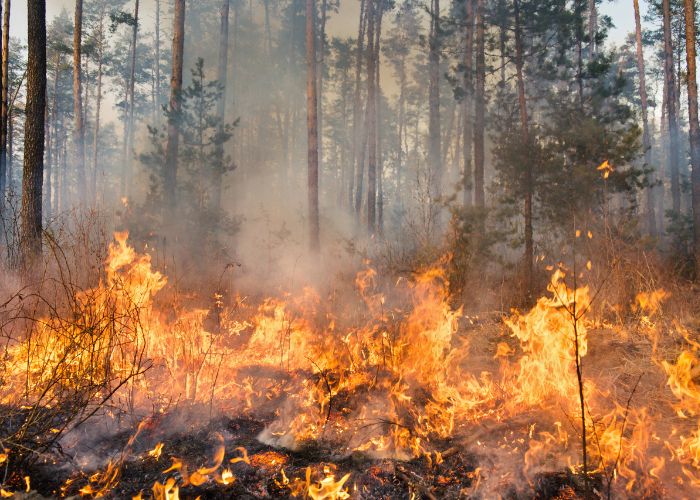MADRID – Spain and France recorded the highest CO2 emissions of the past 20 years between June and August. This is largely caused by the devastating wildfires that have occurred there in recent months.
The total accumulated incinerated area from the beginning of the year to September 3rd in the European Union exceeds 750,000 hectares. This is according to the report of the Copernicus Atmospheric Monitoring Service. Compare that to an average of just over 260 000 hectares between 2006 and 2021 and the difference is clear.
According to data from the CAMS Global Fire Assimilation System (GFAS), total emissions from EU and UK forest fires between June 1 and August 31, 2022, are estimated at 6.4 megatonnes of carbon. That is the highest level since 2007. GFAS relies on satellite observations of active fires and fire emissivity (FRP). They then use remote sensing data to estimate the amount of biomass burned and to estimate pollutant emissions from smoke.
GFAS data shows that both France and Spain recorded the highest CO2 emissions from June to August since 2003. The daily total radioactive potency (FRP) as of early June 2022 shows significantly higher values for France, Spain and Portugal during the heatwaves of July and August.
Portugal
France and Spain had high carbon emissions. However, Portugal had relatively lower estimated emissions compared to previous years, despite some devastating wildfires this summer.
In other regions of Europe, it was Slovenia, the Czech Republic, Hungary and Germany with significant forest fires. In Germany, the cumulative burnt area was 4,293 hectares. That is almost double the previous record of 2,437 hectares. And, furthermore, it is significantly higher than the average of just over 330 hectares in 2006-2021, according to EFFIS data.
Size and persistence of the fires
“The magnitude and persistence of the fires in southwestern Europe, which led to Europe’s highest emissions in 15 years, were extremely worrying throughout the summer. Most of the fires were in places where climate change has increased the flammability of vegetation, such as in Southwest Europe,” said Mark Parrington, CAMS senior scientist and wildfire expert.


